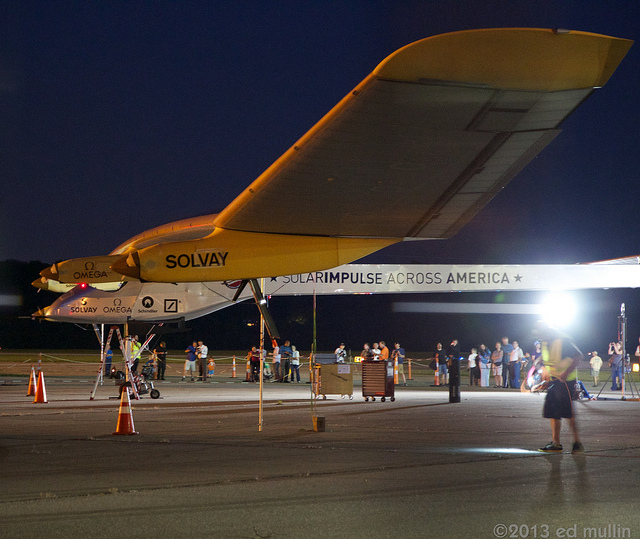
The world’s first solar-powered plane which was attempting to fly across the Pacific Ocean has taken a detour and landed in Japan following unwelcoming weather conditions.
The Solar Impulse 2 plan was flying from China to Hawaii as part of its world tour when it had to come to a stop at Nagoya in Japan. The mission was to fly for six consecutive days and nights across the Pacific Ocean to reach Hawaii, part of the US. If successful, the trip across the Pacific Ocean would also have created a record for the longest duration flown by a single pilot at 5,270 miles. Pilot André Borschberg was flying across the Sea of Japan when he was asked to circle and return back to the nearest base.
The landmark journey by Solar Impulse 2 is aimed to promote green energy in the aviation sector and also tests the endurance of its pilots. The new model flight has a wingspan of 72m, which is wider than a 747 jumbo jet. But its overall weight at only 2.3 tonnes has been critical in its success. The plane has around 17,000 solar cells that line its wings and uses lithium-ion batteries for night-time flying. The only disadvantage of the plane is its slow speed making it daunting for the pilots to cruise it day and night.
The privately-funded Swiss-based company started the construction of the second Solar Impulse aircraft in 2011. Completion was initially planned for 2013, with a 25-day circumnavigation of the globe planned for 2014. However, a structural failure of the aircraft's main spar occurred during static tests in July 2012, leading to delays in the flight testing schedule to allow for repairs.
The Solar Impulse 2 plan was flying from China to Hawaii as part of its world tour when it had to come to a stop at Nagoya in Japan. The mission was to fly for six consecutive days and nights across the Pacific Ocean to reach Hawaii, part of the US. If successful, the trip across the Pacific Ocean would also have created a record for the longest duration flown by a single pilot at 5,270 miles. Pilot André Borschberg was flying across the Sea of Japan when he was asked to circle and return back to the nearest base.
The landmark journey by Solar Impulse 2 is aimed to promote green energy in the aviation sector and also tests the endurance of its pilots. The new model flight has a wingspan of 72m, which is wider than a 747 jumbo jet. But its overall weight at only 2.3 tonnes has been critical in its success. The plane has around 17,000 solar cells that line its wings and uses lithium-ion batteries for night-time flying. The only disadvantage of the plane is its slow speed making it daunting for the pilots to cruise it day and night.
The privately-funded Swiss-based company started the construction of the second Solar Impulse aircraft in 2011. Completion was initially planned for 2013, with a 25-day circumnavigation of the globe planned for 2014. However, a structural failure of the aircraft's main spar occurred during static tests in July 2012, leading to delays in the flight testing schedule to allow for repairs.


















